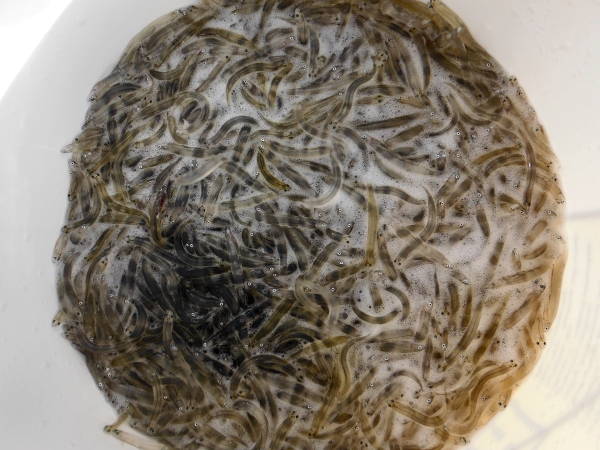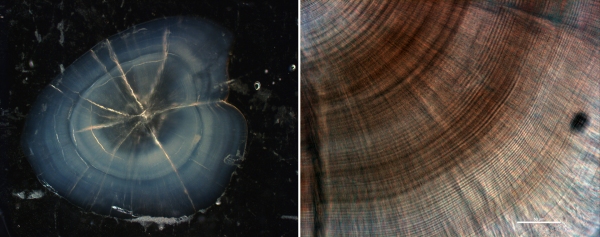Growth of adult inanga is related to larval hatching dates and inward migration timing.
Inanga (Galaxias maculatus) is an amphidromous galaxiid that usually spends its larval life in the marine environment and adult life in freshwater.
The inward migrations of inanga post-larvae back to freshwaters occurs primarily in late winter and spring time where they are targeted as part of the whitebait fishery.
Previous work has shown that body size, age, condition and growth rates of inanga post-larvae, along with migration timing, show strong linkages with larval hatch dates. In this study, we hypothesized that adult inanga may grow at different rates in freshwater depending on larval hatch dates and subsequent timing of post-larval movement into freshwater. Potential differences in growth rates during the adult freshwater phase may have consequences for population dynamics of this species, particularly size and age at maturation, as well as reproductive investment. The interlinkages between growth and reproductive traits will improve understanding of this species complex life cycle and better inform strategies to protect declining populations.
We used otoliths (fish ear bones) to investigate relationships between larval hatch dates and adult growth rates from multiple populations in the Golden Bay region.
First, the growth histories of adult inanga were derived from measurements of incremental distances between daily rings. Then, age and hatch dates were estimated.
Reproductive investment was quantified using the gonad-somatic index (GSI) where gonad weight is standardized for fish total body weight. We modelled otolith-derived growth using non-linear methods and compared growth histories among larval hatching times (autumn, winter and spring-hatched fish). We tested for differences in body size at maturity, age at sexual maturity and GSI.
Results showed that autumn-hatched inanga had higher age dependent growth rates in freshwater compared to winter- or spring-hatched fish, despite being significantly slower growing in their marine pelagic phase. For later migrating winter- and spring-hatched fish, although pelagic larval growth rates were faster, growth in freshwater was slower compared to autumn-hatched fish.
Despite larval marine and adult freshwater growth trajectories differing among larval hatching times, no differences in body size at sexual maturity were found. Furthermore, although winter- and spring-hatched inanga were significantly younger at sexual maturity than autumn-hatched fish, reproductive investment (GSI) did not show any significant differences among larval hatching times.
These results shed light on the relationships between growth attained in pelagic and freshwater environments. We suggest that inanga are an incredibly flexible species and their growth rates can be maximized in marine and freshwater environments. This enables them to acquire an optimal body size to maximize reproductive investment which is a key life history strategy underpinning this species population dynamics. Future studies will incorporate environmental conditions in freshwater (e.g. temperature, flow variability) to examine how environmental variation impacts inanga growth rates.
More articles: Freshwater Update 75, November 2017




